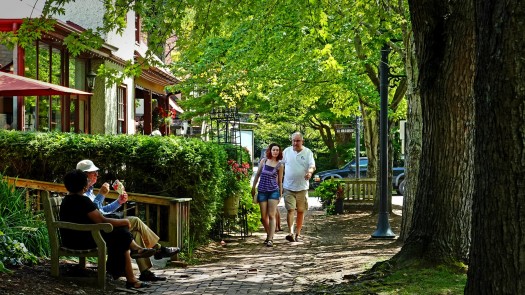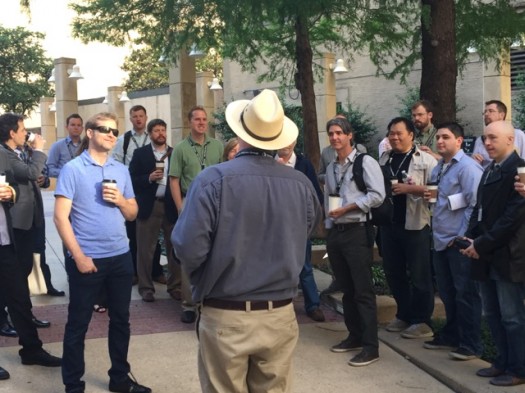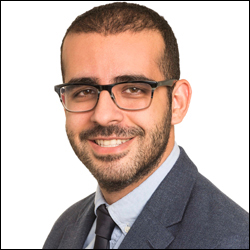Jeff Speck’s Step-by-Step Guide to Making Better Urban Places
If you are involved in the world of city and neighborhood design, you probably know (or at least have heard of) the work of urban thinker, writer, lecturer, and city planner Jeff Speck. He has authored or coauthored a number of books in the field, my personal favorite being The Smart Growth Manual (2010, coauthored with…
Read MoreThe Transformative Power of Walkability (and beer)
I’m suspicious of the words “neighborhood character” in defensive mode. If they once signaled a community characteristic worth prioritizing, the’ve lately become weaponized. A dog whistle for opposition to everything from granny flats to transit to, you know, change. But I’m definitely okay when the character of the neighborhood in question embodies adaptation. My current…
Read MoreThe Human Scale
I recently watched The Human Scale again, a film from 2013, and felt the anticipation building to meet Jan Gehl at the 26th Congress for the New Urbanism (#CNU26) in Savannah next week, and at home in Winnipeg in September. I’m sure Jan will bring us an update on his city planning work in the…
Read MoreTools to Stop Coming Up Short on Affordable Housing
In the weeks before the Congress for the New Urbanism conference in Savannah, GA, May 15-19, we’re presenting interviews with experts contributing to a day-long exploration of “Affordability: The Intersection of Everything.” A three-hour morning forum on Thursday, May 17, kicks off the discussion, followed by two break-out sessions that afternoon. Below is an interview…
Read MoreAffordable Housing Finance: Show me the money
In the weeks before the Congress for the New Urbanism conference in Savannah, GA, May 15-19, we’re presenting interviews with experts contributing to a day-long exploration of “Affordability: The Intersection of Everything.” A three-hour morning forum on Thursday, May 17, kicks off the discussion, followed by two break-out sessions that afternoon. Below is an interview…
Read MoreNew Housing Finance (Mostly) Without the Feds
In the weeks before the Congress for the New Urbanism conference in Savannah, GA, May 15-19, we’re presenting interviews with experts contributing to a day-long exploration of “Affordability: The Intersection of Everything.” A three-hour morning forum on Thursday, May 17, kicks off the discussion, followed by two break-out sessions that afternoon. Below is an interview…
Read MoreAffordability in Context: Part II
In the weeks before the Congress for the New Urbanism conference in Savannah, Georgia, May 15-19, we’re presenting interviews with experts contributing to a day-long exploration of “Affordability: The Intersection of Everything.” A three-hour morning forum on Thursday, May 17, kicks off the discussion, followed by two break-out sessions that afternoon. Below is Part II…
Read MoreCommunity Affordability in Context: It’s not just about the house
Next month, May 15-19, when the Congress for the Urbanism holds its conference in Savannah, one day’s focus will be on “Affordability: The Intersection of Everything.” Between now and the beginning of the conference, we’ll present a series of Q&As with participants in that day’s discussion. Leading off is Scott Bernstein, a founder of the…
Read MoreThe Science Is In: The healthiest neighborhoods are both walkable and green
Most of us, most of the time, don’t make much connection between place – the neighborhoods where we live, work, and play – and our health. Not unless we’re thinking of such obvious local health concerns as an outbreak of infectious disease in the community, serious levels of pollution or toxicity nearby, or perhaps about local…
Read MoreClimate Change: Making the most of failure
Though it surely happens in sports at all levels, there’s one phenomenon that’s particularly common in youth sports: A game in which you’re so outmatched, so fundamentally inferior to your opponent that the outcome, minus Divine or supernatural intervention, is essentially guaranteed. You’re going to lose.
Read More



